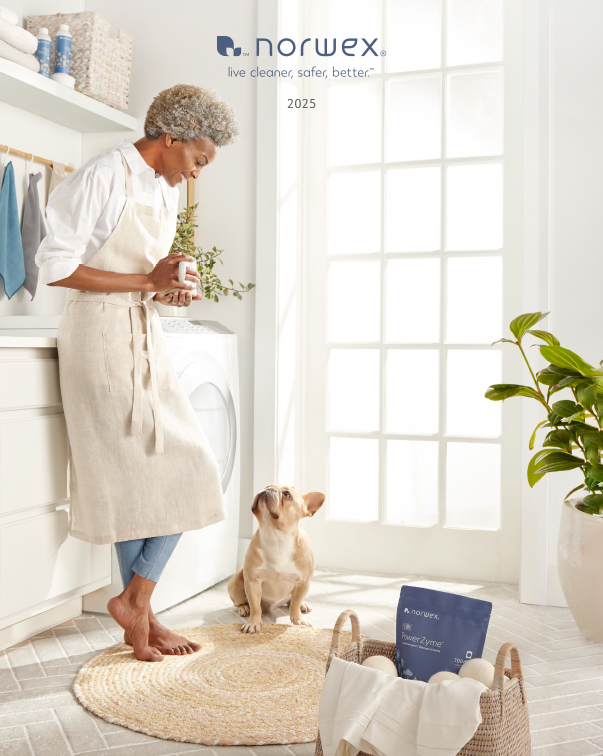People have been whitening fabrics for centuries. The ancient Egyptians, Greeks, and Romans bleached materials and, as early as 300 B.C. , soda ash was prepared from burned seaweed and used to clean and whiten cloth. [1] Today, bleach is found in nearly every household. People have been putting it in their laundry, using it to disinfect, and cleaning all sorts of surfaces.
Although bleach is used to clean and sanitize after natural disasters, including the purification of drinking water,[2] it can be a dangerous product when used in the home. Sodium Hypochlorite is the active ingredient in household bleach. It is an ingredient found also in many toilet, tub, shower, bathroom, kitchen and all purpose cleaners. Bleach is cheap to manufacture and is effective in both warm and hot wash temperatures. However, it has strong chemical properties which can weaken textile fibers.[3]
Some of the concerns about bleach and household cleaners containing it include:[4]
Health issues – Bleach is a strong corrosive and can cause respiratory problems, burned skin, eye irritations, and damage to the nervous system due to fumes and chemical reactions. In many cases, the use of bleach and cleaners with chlorine irritate conditions that people have, such as allergies and asthma.
Potential chemical reactions – With bleach, there are different reactions that can cause a lot of dangerous situations.
Mixing Bleach and Ammonia (including urine) – This can happen when mixing cleaners (on purpose or by accident). Window cleaners is one example of a product often containing ammonia. Use caution when cleaning litter boxes, diaper pails or toilet bowls. When bleach is mixed with ammonia, toxic gases called chloramines are produced. Exposure to chloramines gases can produce the following symptoms:[5]
Coughing
Nausea
Shortness of breath
Watery eyes
Chest pain
Irritation to the throat, nose and eyes
Wheezing
Pneumonia and fluid in the lungs
Mixing Bleach and Acids – When chlorine bleach is mixed with an acid, chlorine gas is given off. Chlorine gas and water combine to make hydrochloric and hypochlorous acids. The symptoms are similar to the ones listed above for exposure to chloramines gases. Chlorine can be absorbed through the skin, resulting in pain, inflammation, swelling, and blistering. Hydrochloric acid also causes burns to the skin, eyes, nose, throat, mouth, and lungs.[6] Products containing acids include:
Vinegar
Some glass and window cleaners
Some automatic dishwasher detergents and rinses
Some toilet bowl cleaners
Some drain cleaners
Some lime, calcium and rust removal products
Some brick and concrete cleaners
Mixing with Organic Matter Creating Chloroform – This is a toxin and a known carcinogen. It happens in the home while cleaning the kitchen, the toilet, washing the laundry, and cleaning up food, blood, or other organic messes.[7] It occurs when sodium hypochlorite is mixed with common household cleaners containing acetone (solvent), butanone (cleaning agent), ethanol (sanitizer), or isopropyl alcohol.[8]
Toxins – Chemical reactions that occur produce toxic elements. Most of these are known carcinogens, they build up in the body as it is exposed to them, and they get into the food chain through the water.
Stay-at-home women have a 54% higher chance of getting cancer than women who work outside the home. It is believed that this is because they are exposed more to chemicals released by household cleaners![9]
Accidents – More than 240,000 children are reported taken to Emergency Rooms each year due to poisoning from household chemicals…and more than 35 children die each year from accidental poisonings in the home.[10] The risk is greatest for children up to 5 years of age.
Pets – They are affected by the fumes or ingestion of bleach and chlorine based cleaners too!
Environment – Toxins produced as a result of bleach use also create severe impacts when released into rivers and ponds, harming fish and other marine life. Precautions should be taken to keep bleach out of storm water drains, as many of these systems do not get treated by waste water plants before being released into streams and rivers.[11]
Given the harmful effects of bleach, we should seek alternatives to bleach and all household cleaners that contain toxic chemicals. It is easy to see why we should choose to use Norwex Enviro Products! Norwex is committed to radically reducing the use of chemicals in its cleaning products! By choosing Norwex you will:
- Protect children & pets from accidental poisoning
- Protect yourself (or the primary cleaner of the home) from contact with toxic ingredients
- Protect your home’s indoor air quality – no dangerous fumes
- Protect the environment and water table
Norwex carries a full line of chemical free laundry products, including Norwex Laundry Pre Wash, which penetrates, dissolves and eliminates a variety of stains and soil in fabrics. No need for bleach!! In addition, Norwex has eco-friendly green cleaners for every room in your home, including your floors, and even your car!! Norwex Enviro Products clean effectively, save time and money, and come with a 100% Satisfaction Guarantee!
Please feel free to contact me if you have any questions or want more information about these wonderful products or suggestions on how to use them!
[1] http://www.madehow.com/Volume-2/Bleach.html
[2] http://www.madehow.com/Volume-2/Bleach.html
[3] http://www.howtodothings.com/home-garden/how-to-understand-why-bleach-is-bad
[4] http://www.howtodothings.com/home-garden/how-to-understand-why-bleach-is-bad
[5] http://en.wikipedia.org/wiki/Chloroform
[6] http://www.howtodothings.com/home-garden/how-to-understand-why-bleach-is-bad
[7] http://www.ehow.com/about_6516369_chlorine-bleach-poisoning.html





[…] to keep them white. I have previously posted some information on the dangers of bleach under Negative Impacts of Bleach, so that is not an option I would recommend either. It’s hard on the clothes, and not […]